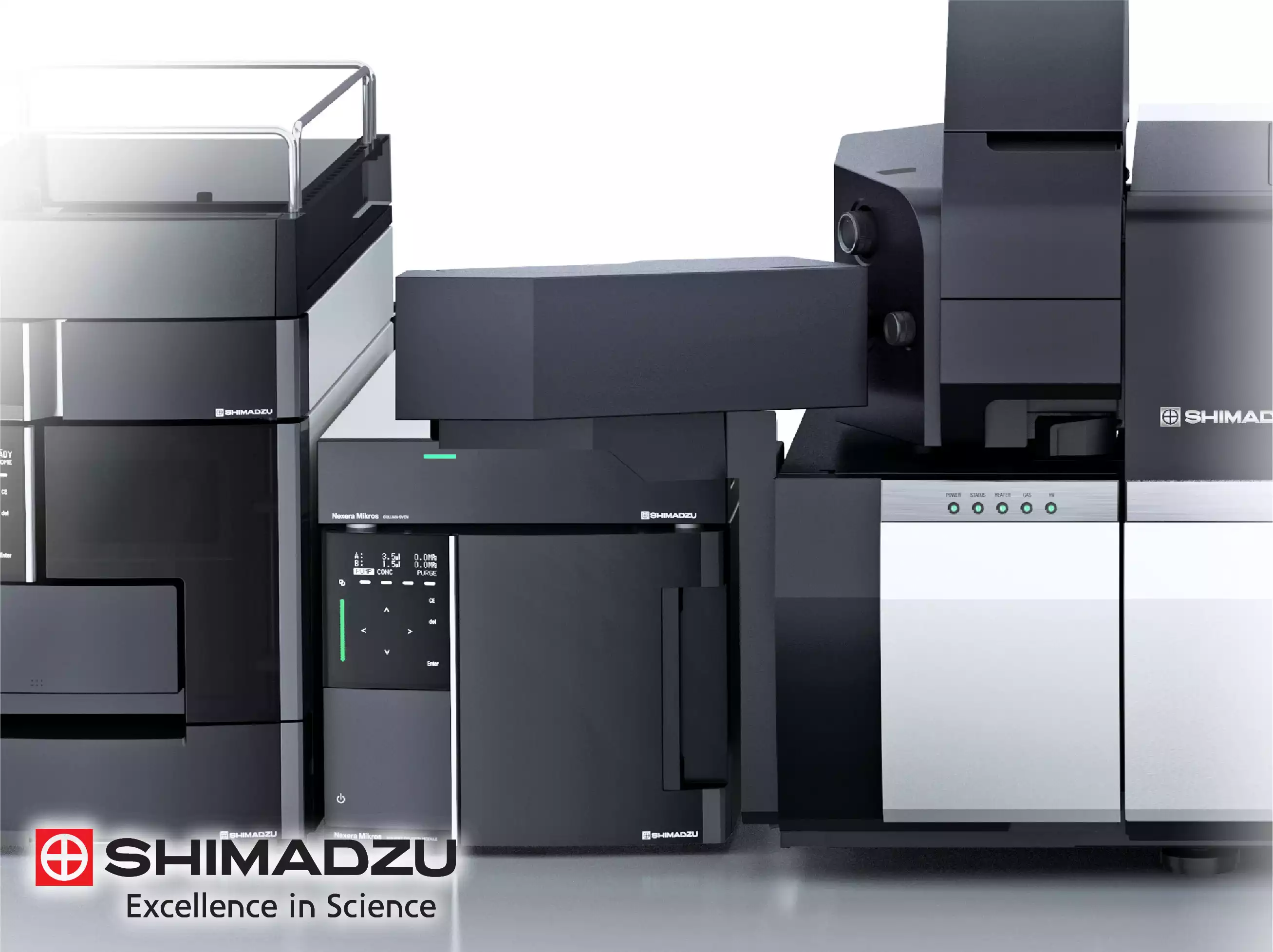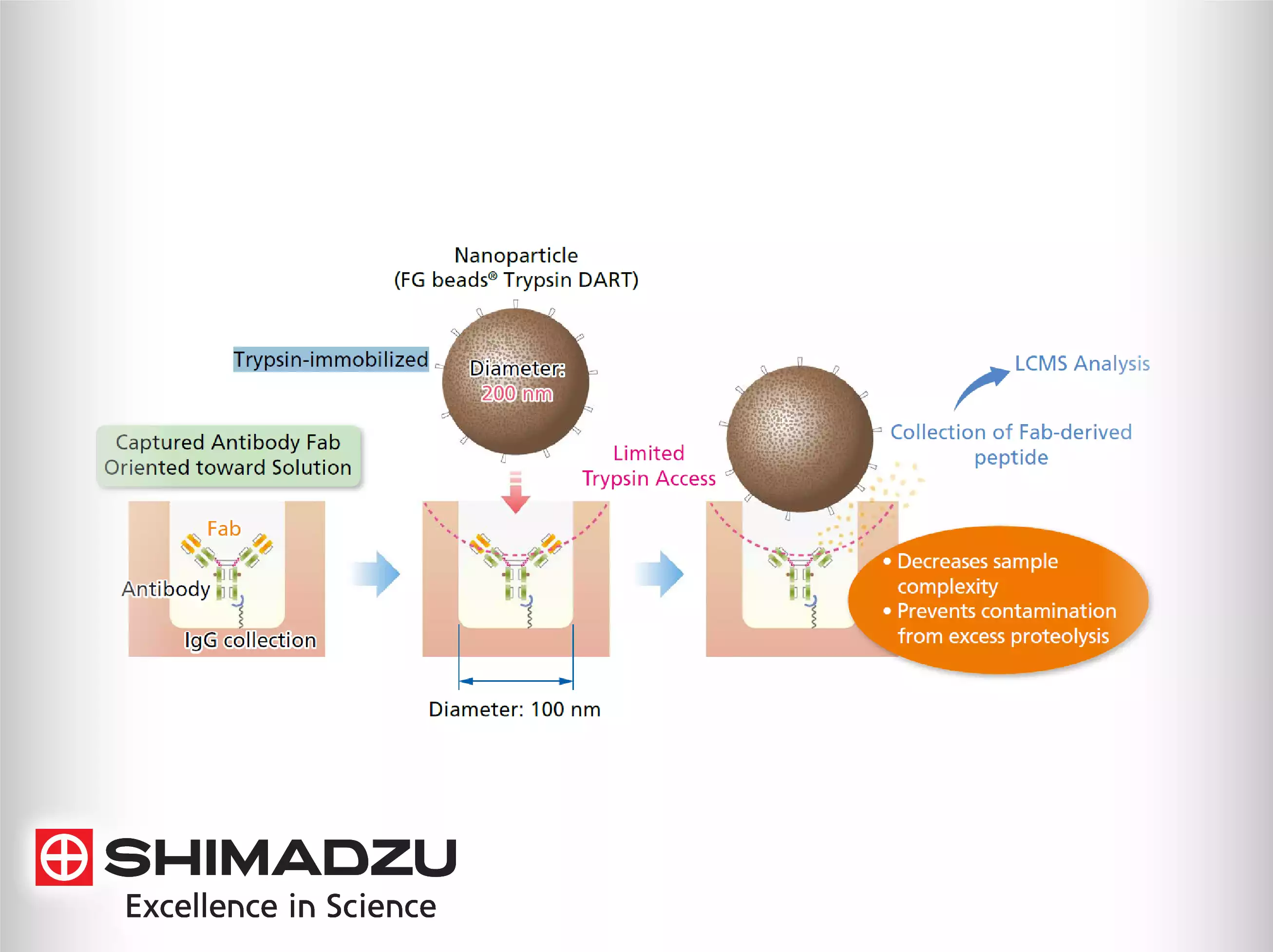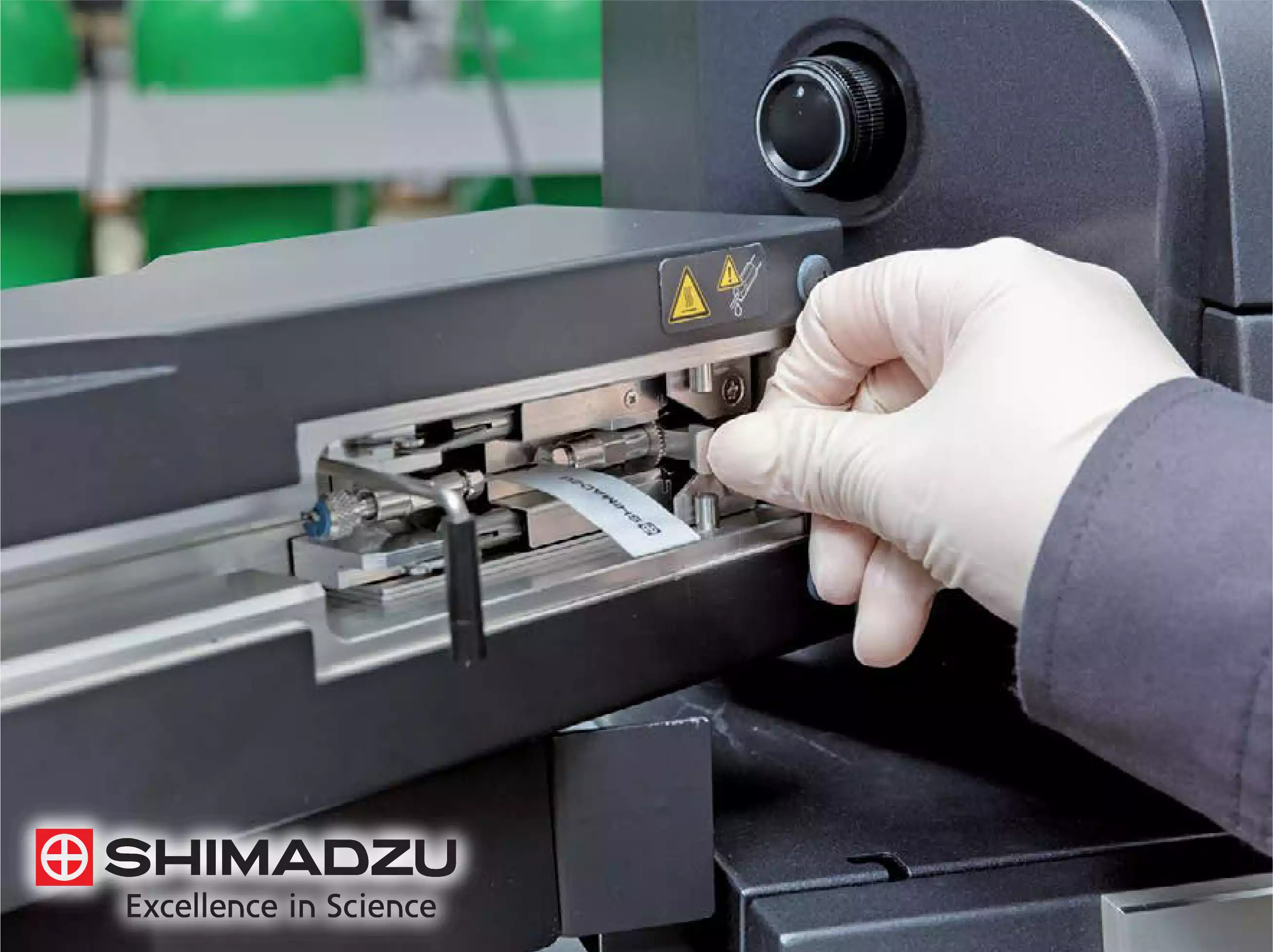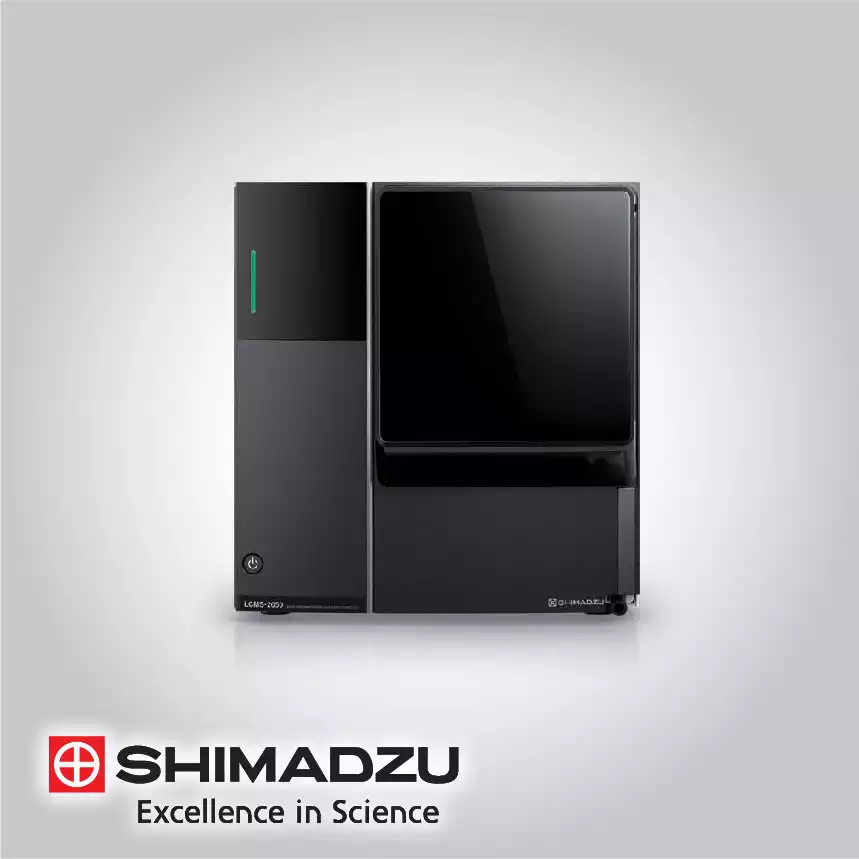
Home » Products » Chromatography/Mass Spectrometry » Liquid Chromatograph-Mass Spectrometry » Shimadzu Nexera Mikros Microflow LC/MS System
Shimadzu Nexera Mikros Microflow Liquid Chromatography Mass Spectrometry System
Above and beyond nano
Shimadzu Nexera Mikros Microflow LC/MS System
Shimadzu's Nexera Mikros Microflow Liquid Chromatography Mass Spectrometry System main features are:
Improved Detection Limits with Microflow
- High Bioanalytical Sensitivity
Sensitivity remains a challenge for many vitamin D metabolites, such as 1,25(OH)2 di-hydroxyvitamin D and 24,25(OH)2 di-hydroxyvitamin D, because they lack easily ionizable functional groups and are in low-abundance. As shown below, microflow LC/MS/MS analysis of standard solutions of the aforementioned vitamin D analytes resulted in a three- to five-fold improvement in the signal-to-noise ratio when compared to semi-microflow analysis.
The increased sensitivity achievable by microflow LC/MS/MS, compared to semi-microflow, resulted in a five-fold increase in the signal-to-noise ratio for Verapamil and a four-fold increase in the signal-to-noise ratio of Nor-Verapamil.
- Monoclonal Antibody Bioanalysis
Nexera™ Mikros and nSMOL™ Antibody BA Kit -
nSMOL (nano-surface and molecular orientation limited proteolysis) is a proprietary, ground-breaking process that enables selective proteolysis of the Fab region of antibodies using trypsin-immobilized nanoparticles. Fab-derived peptides are quantified via MRM measurement on a high-sensitivity mass spectrometer. The Nexera Mikros system achieved signal intensities 12 times higher than with conventional flow rates, with a corresponding lower limit of detection of 0.025 μg/mL and good linearity. The Nexera Mikros system is ideal for low-level quantitation of peptides by LCMS.
- Incomparable Microflow Ruggedness
Realize the Benefits of Microflow While Enjoying the Ruggedness and Reliability of HPLC
The Nexera Mikros system delivers the improvements you expect from a low-flow system with the ruggedness of HPLC. A plasma blank was protein precipitated, diluted (3x), and injected 1,500 times consecutively. During the consecutive injections, QC sample (40 ppt of nortriptyline) was injected once every 50 injections of plasma blank. Peak areas and retention times of QC sample are plotted below. With 4.38% RSD area repeatability and 0.25% RSD retention time stability, extremely stable operation was demonstrated, without loss of peak shape common in high-throughput analyses of complex matrices.
- Easy, Familiar Operation
Robust and Easy-to-Use Microflow ESI Source
Micro-ESI™ Sources: Shimadzu’s Micro-ESI LCMS source has been designed for optimal sensitivity and ease of use. An X–Y adjustable stage and viewing camera allow for easy ESI spray needle adjustment. The column oven is mounted on the LCMS to minimize the volume between the exit of the column and the ESI needle.
The Micro-ESI probe also features an ESI spray angle optimized for microflow rates, and is available for triple quadrupole mass detection mass spectrometryand quadrupole time-of-flight mass spectrometry, respectively.
- CTO-Mikros™ + UF-Link™: Easy, Dependable Column Installation
Mounted to the Micro-ESI source is the CTO-Mikros column oven. Stable column temperature, essential to retention time reproducibility, is ensured and columns up to 150 mm in length can be accommodated. To preserve the optimal source adjustment, the CTO-Mikros features an innovative snap-in column locking system, the UF-Link.
When using microfow rates, even the smallest of dead volumes can cause significant diffusion and lead to loss of peak shape and sensitivity. Shimadzu’s UF-Link allows any user to correctly install a microflow column without disrupting the ESI spray needle position. A sure-sealing adapter allows the column to lock into the oven and make a zero-dead volume connection with the ESI needle. Any column up to 150 mm in length with standard fittings can be accommodated.
Read more about Shimadzu Nexera Mikros Microflow Liquid Chromatography Mass Spectrometry System








.webp)
.webp)
.webp)
.webp)
.webp)
.webp)
.webp)
.webp)
